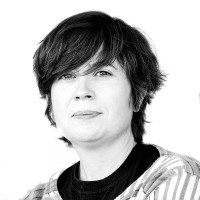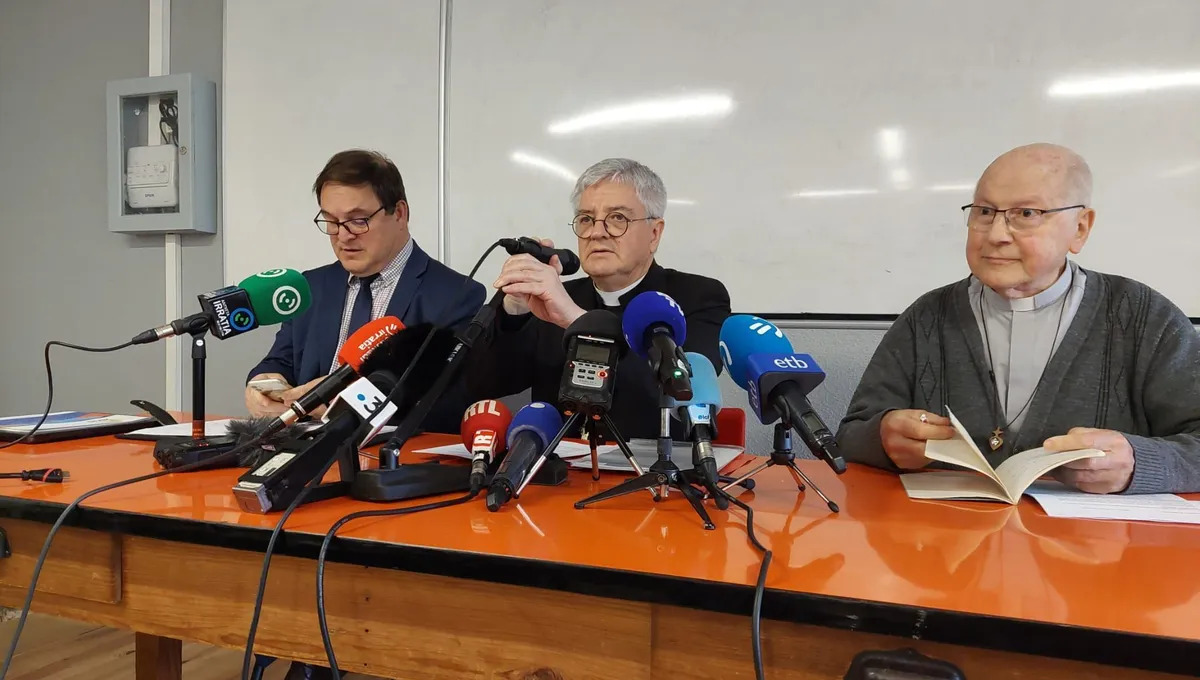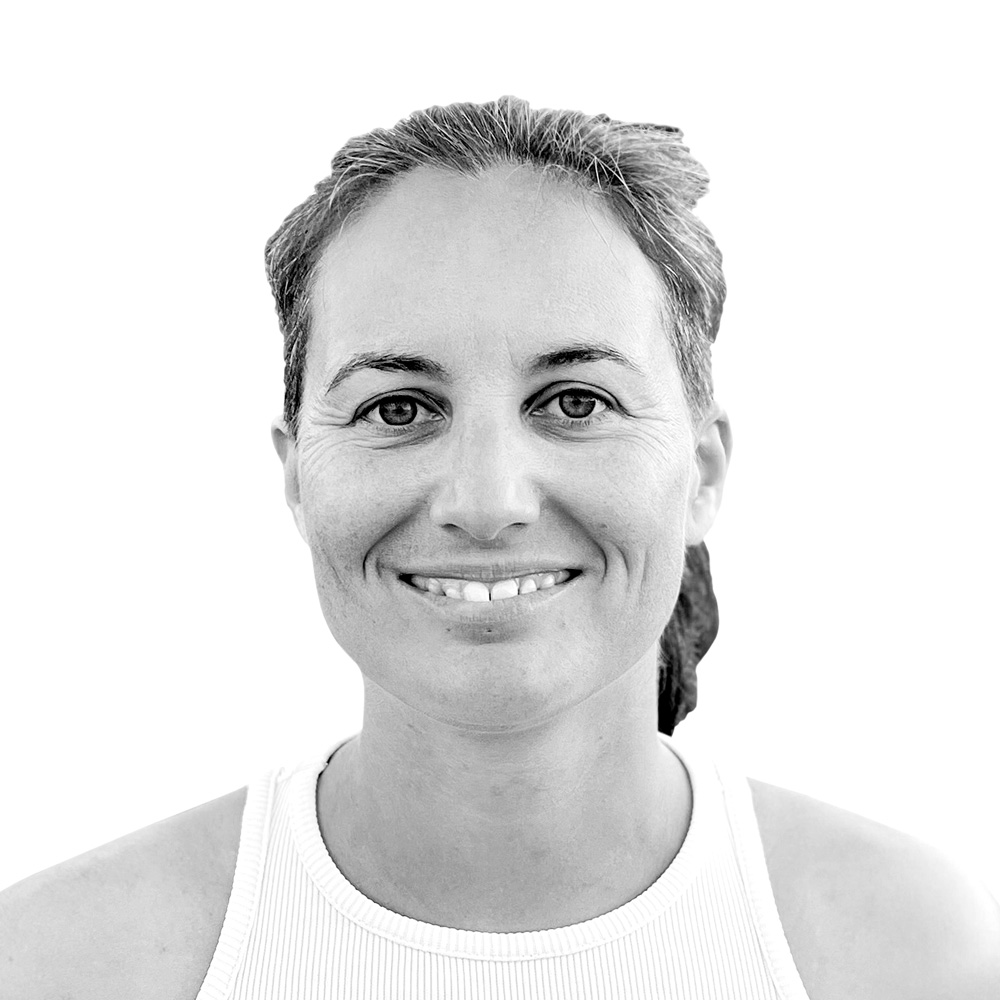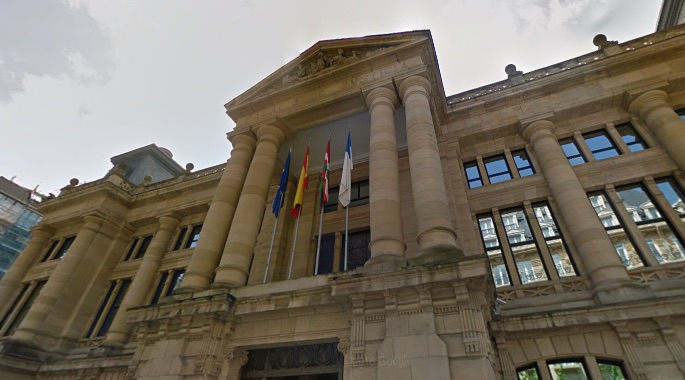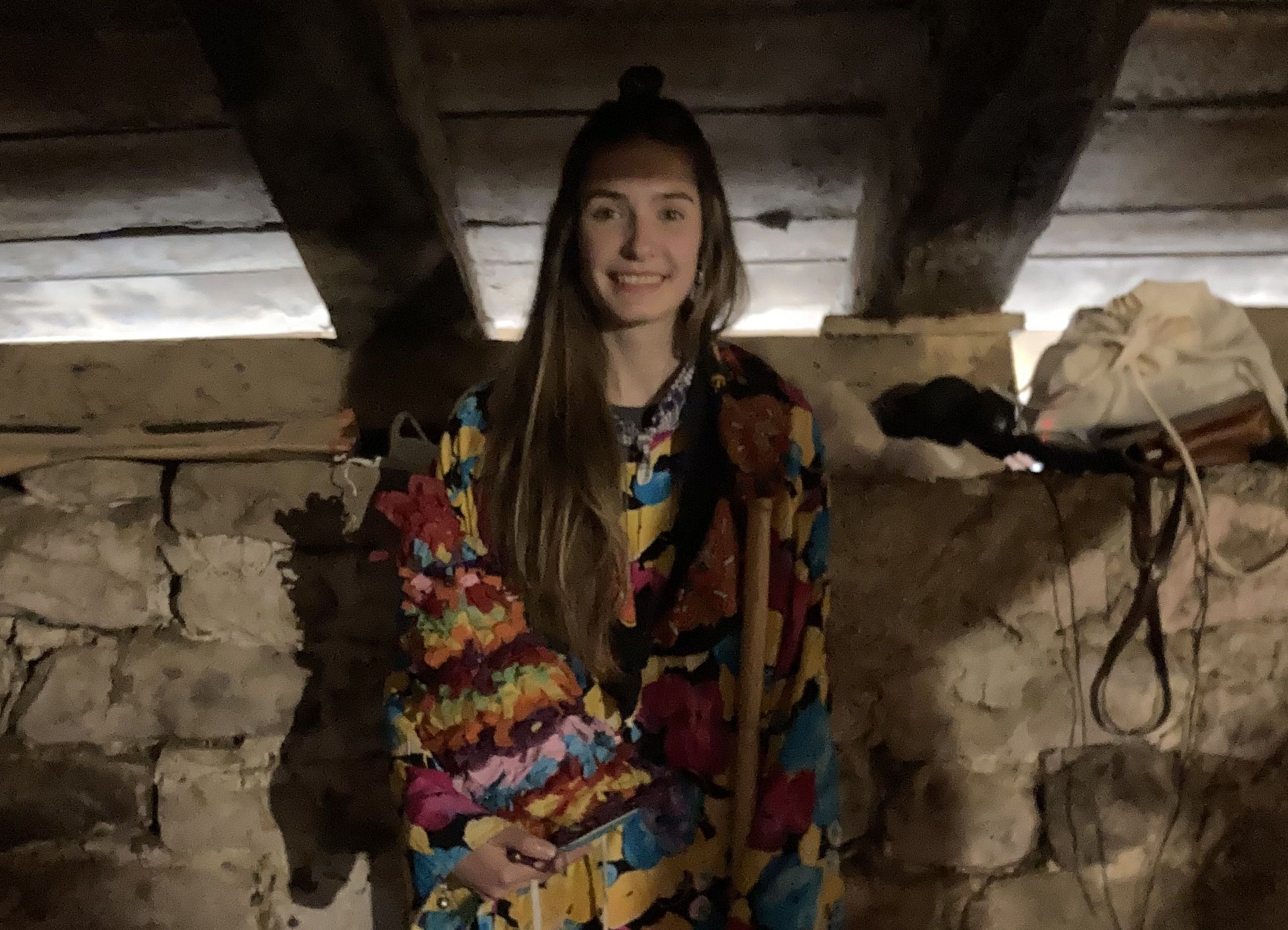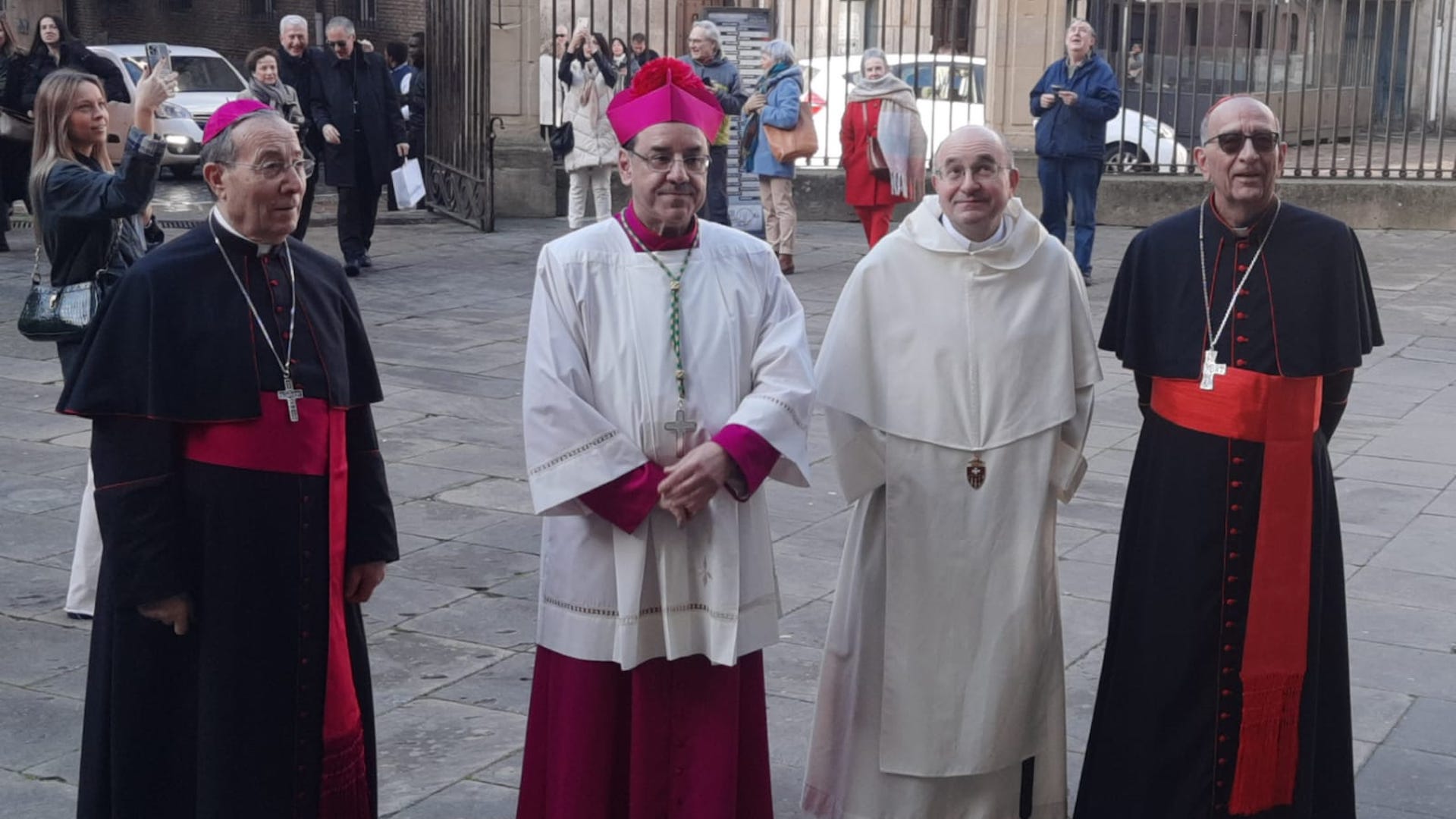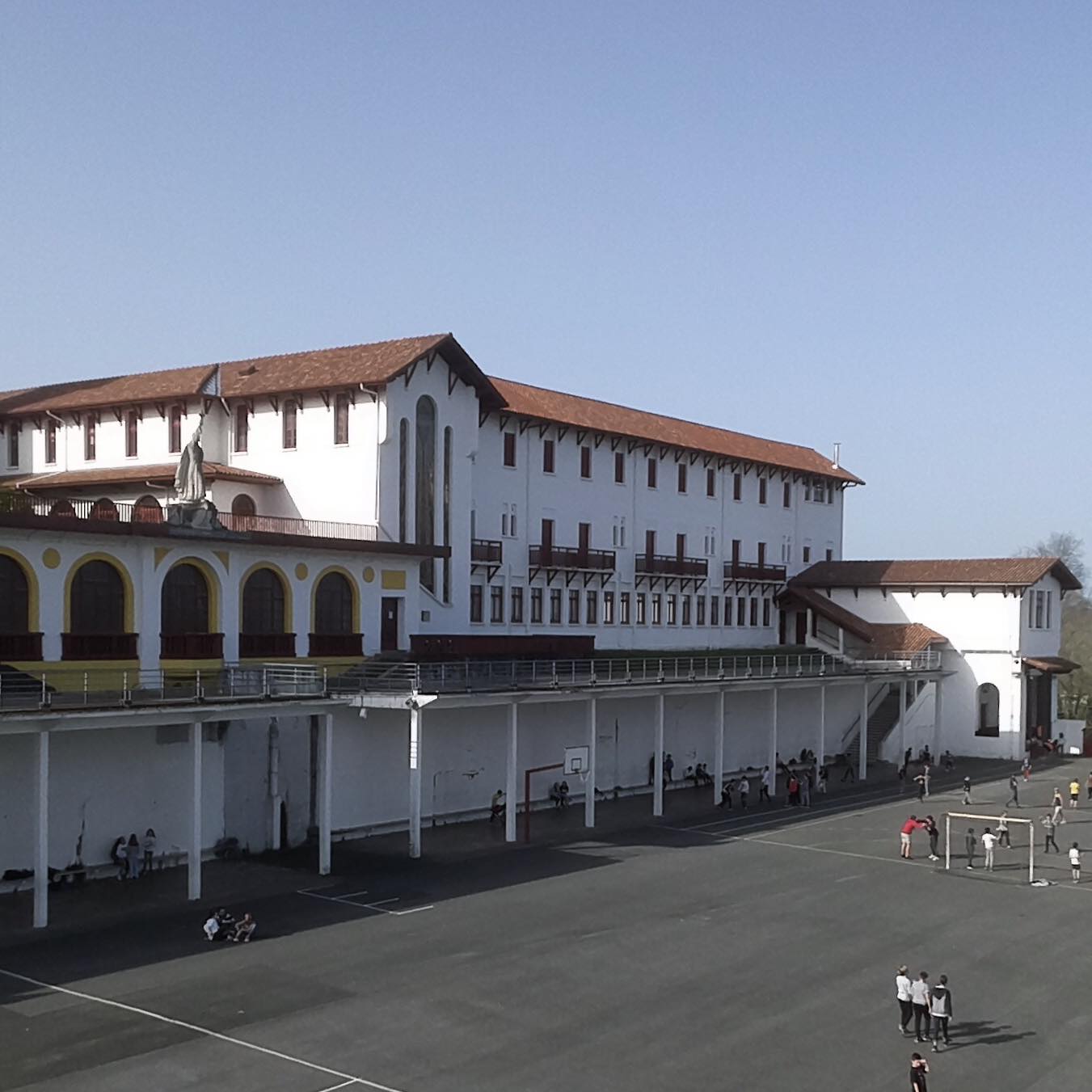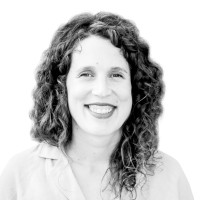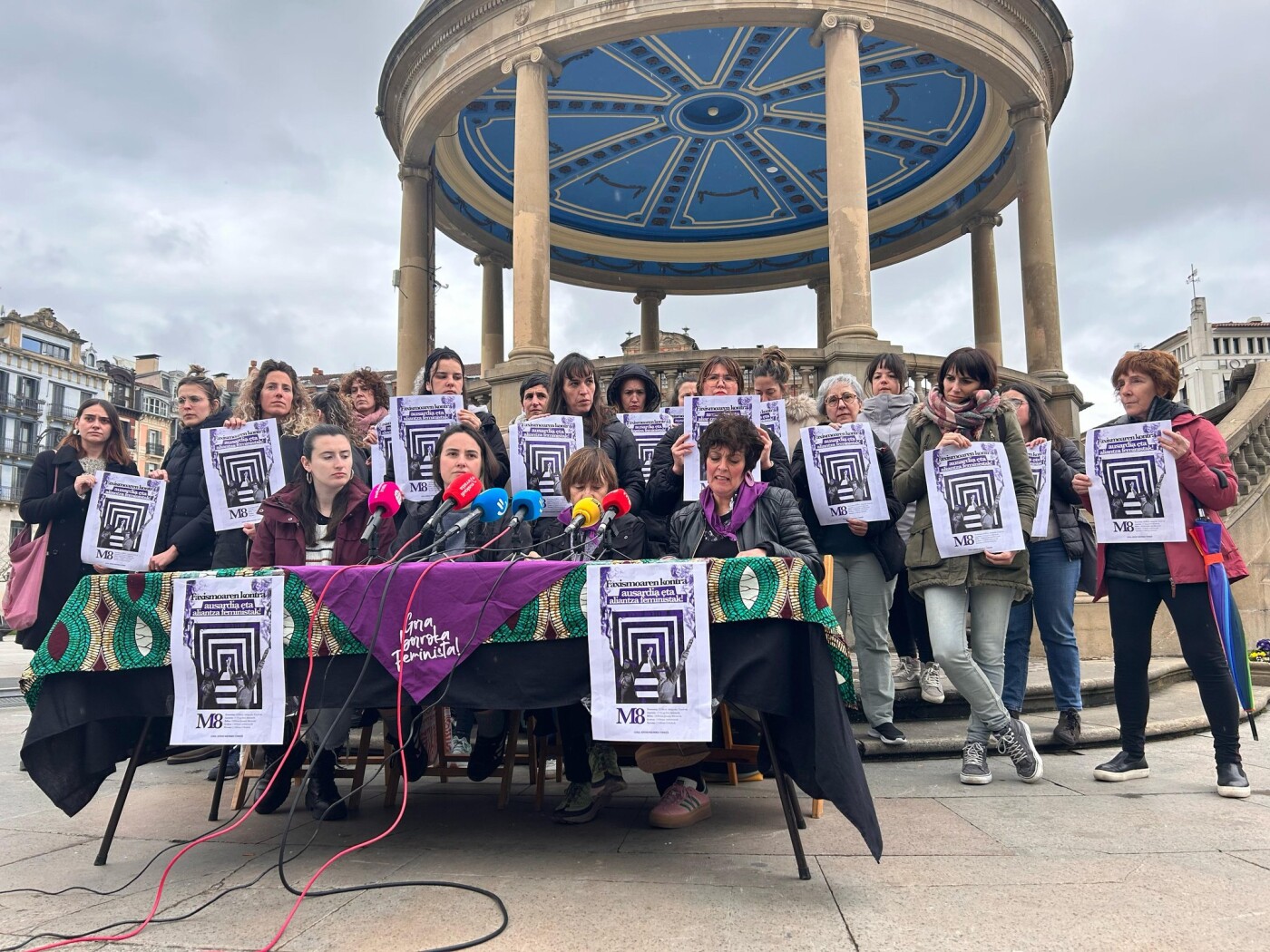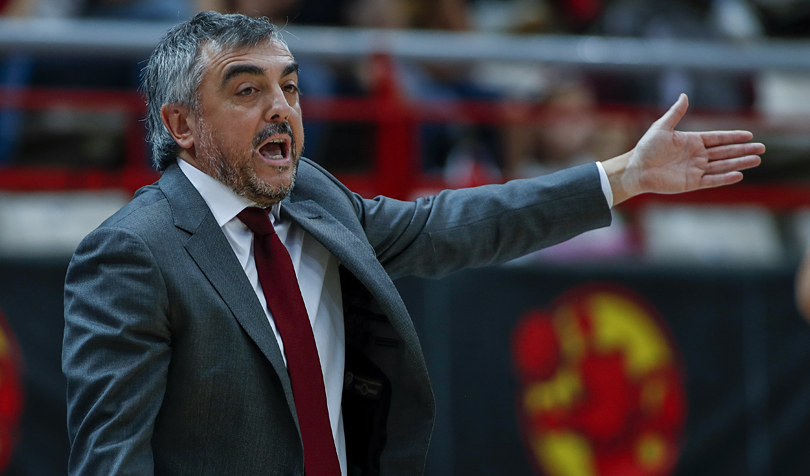"I draw LGTBQ+ identities, people then see what they want or can."
- Campistron receives us in his Alduque study. In the same church building it has its place of work, supported by the wall, and at the same time of Mass it listens to the songs of the faithful and the conversations of the cure. On its walls, however, palettes of colors and images of women appear. Naked women. Powerful. Thick wives. Sinful.
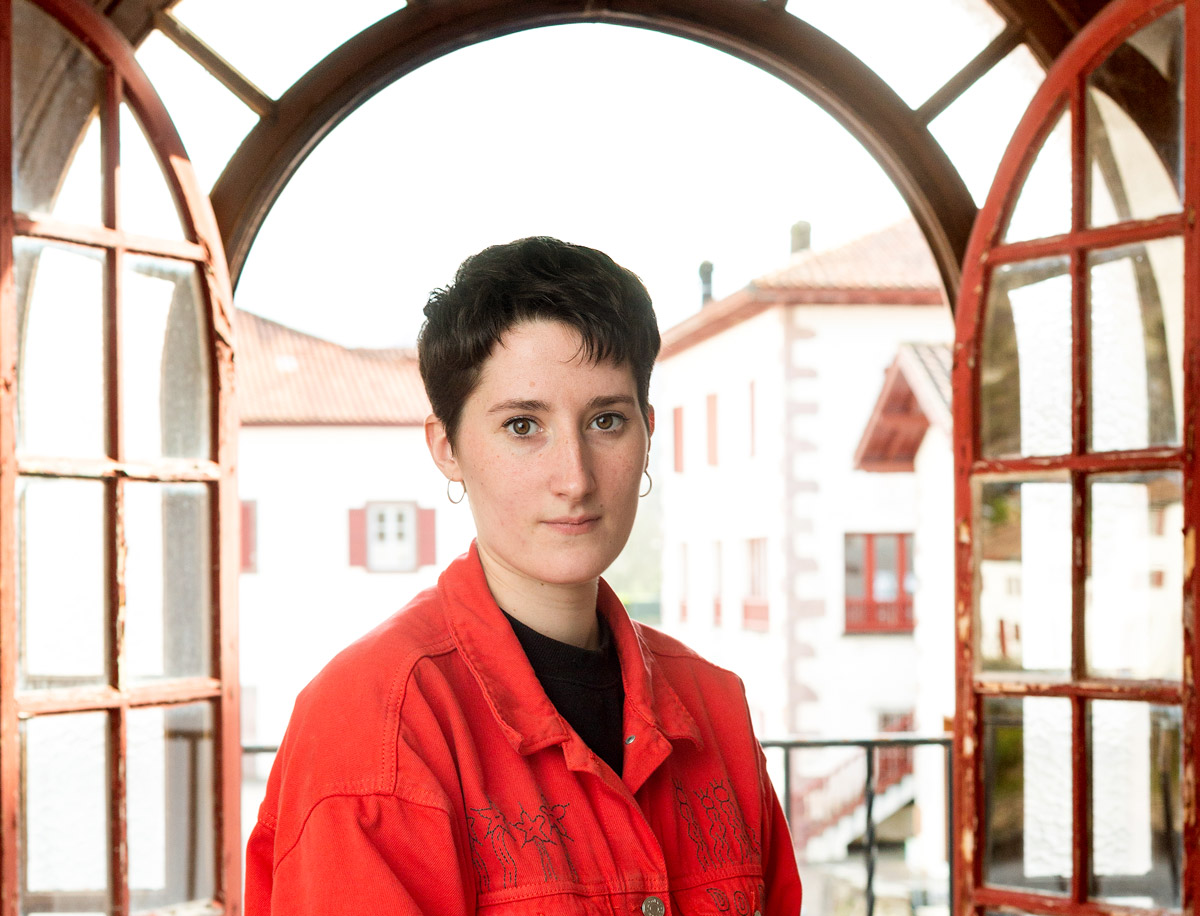
Marrazkilaria da Dom. Aldudetik Parisera, Paristik Glasgowra eta Glasgowtik Aldudera, bere ibilbide artistikoa du bizitza ibilbide. Hainbat lan eta kolaborazio egin ondoren, apirilaren 13an aterako da Bekatorosak bere lehen album ilustratua. Nafarroa Behereko zazpi lagun elkarrizketatu ditu, lesbianak, queerrak, gayak, eta paperera ekarri ditu haien esperientziak, irudi diren hitzez, eta hitz diren irudiz.
You've grown up in Aldud. How do you remember your childhood?
I have great memories. I grew up in a small town, with my two sisters, making animated tours abroad, in nature, with my parents, a pretty childhood. I also had my grandparents and my grandmothers, who are peasants. He lived on a ranch, surrounded by cattle… A simple, rich and joyful life. Then our parents were teachers, and they both loved multiple art and literature. So we were in nature and at the same time we had many cultures at home. We looked at good movies, we read -- and we lived a long way from television. My mother always told me that I had to work my imagination, that I needed to hold back and play with the images that were going on in my head. That has made it easier for me to be a cartoonist in the future.
And in adolescence? What does a teenager do in Aldude?
Don't get bored. But I started to understand who I was. I saw that I had other interests. I got hungry for a city. But I didn't get bored with this. I wanted something else. She loved the Basque Country and the popular culture here. Think we can do everything. Both dance and theater, singing and music. Here it is very easy to touch everything, because everything is at hand. But also, I wanted to learn the history of art, go to museums, galleries… that taste had.
And on the other hand, at the age of 16, I understood that I also wanted girls. And that, in its day, was very violent. I thought I was the only one. That feeling of loneliness led me to want to meet more people. Like me. Both in the art world and in sexuality. That took me abroad.
Wasn't it heterogeneous, all around it?
I'm 26 years old, and you might think that in the 1990s, I would be gay, and I would live peacefully and publicly around me. But no. When I was 16, I found out I wanted girls, because I fell in love with a girl and she too. We both started a relationship, but I had never seen a gay couple kiss. I didn't hear the word "lesbian." When I came back from abroad, I realized that there were homosexual people in my very close environment, but I didn't know it was. And when we talk to them, it's now curious to them that I haven't understood it. The thing is, you didn't talk and you didn't teach.
So, I liked girls, and I was alone. I've had an animation stick because my family was very open. Then they loved my friend. But here are the seeds like garlands. I was going to Mass all Sunday. I was also Beretter! She lived in an environment of Giristine, heteronormatist, hunter and peasant society. And it lasted for a week. It was very short, but I felt dirty. The road was very difficult and we took time to be, out, quiet, demonstrating that we were a couple. Years.
Then, since I've come back, I've been surprised that the people I knew came out of the closet while I was out. Feminism before was also marginal, and now it's in the air. It's been a huge fracture with me too. And social media, with the needs. If I had that, I could see those referents from Alduque ... Today's youth sees these images, and that's an opening of animation.
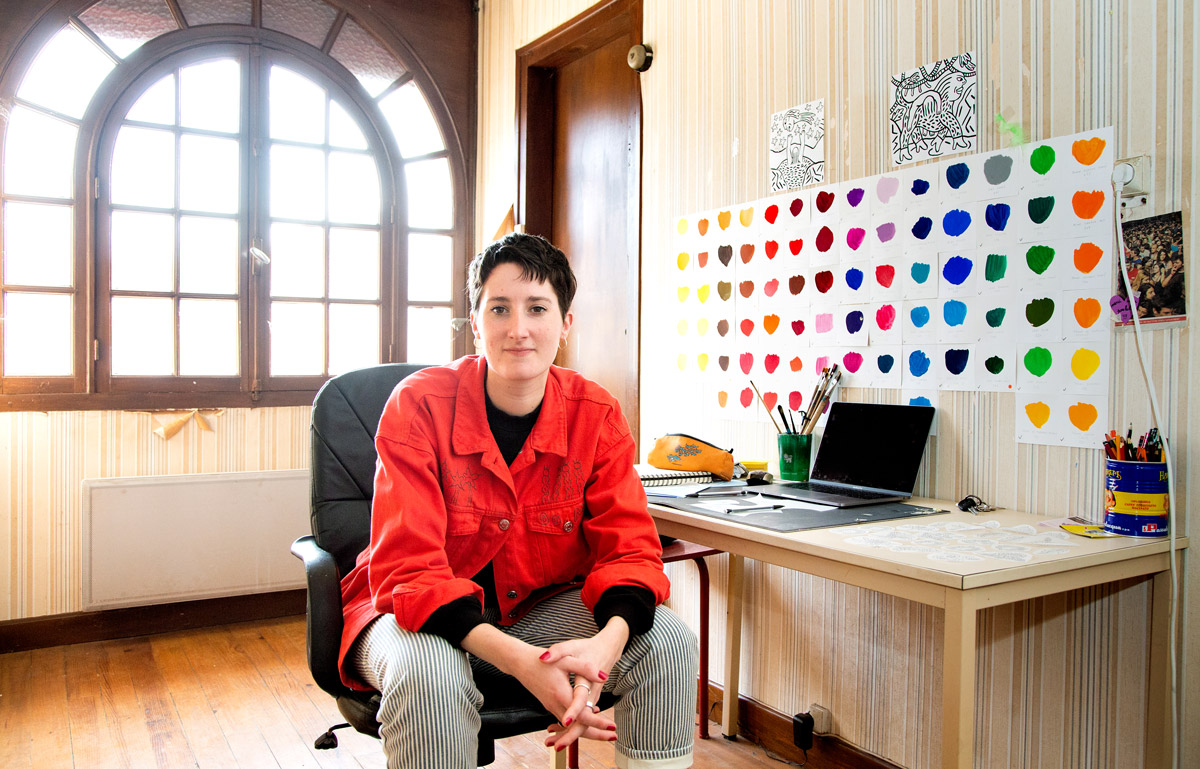
"I loved the girls and I was alone. I've had an animation stick because my family was very coveted. They immediately loved my friend."
How did he start drawing?
I don't have memories of what I started. I've been drawing it ever since. My father would draw many times at home, and with him we would do cartoons. He loved the comic. And what I wanted was to tell stories. Our mother read us stories. And I really liked those moments. Among us we were also doing theater in front of our mockery. He wrote many times… The drawing was taken in times of lust. Maybe because it was easier to tell stories through drawings. Because it's really been the thread, my words, and my point of view.
So at the end of the Lyceum era, you decided to go to an art school. Alduque to Paris.
I went to Paris, with as many fears as I wanted. I really needed it. I saw the things I wanted, I was going to lesbian bars -- I was really hungry. I had to investigate who I was, capture my style, know what I thought… I really boasted in Paris. Well, there I had to fight with another personality. From the point of view of Paris he was a farmer. Peasant and Basque. Therefore, ETA, bombs, and other jokes… Bisexuality lived more easily, but there it was difficult to be Euskaldun. It was interesting.
And what did you detect in art school?
I spent drawing it all day, boring… It was pleasure. In traditional school, I've always been angry. I didn't understand why I had to learn some things. It seemed to me to waste my time. In lyceum, I knew I wanted to learn art. I was exhausted from boredom.
But it also had its cons. The competitiveness among students is enormous. And the professor is on top of you and you can't say anything. This drawing is good, this isn't. And you in silence. I ruined what everything is plume... and the professor didn't support it. We do not therefore manage very well. I do not want that tradition of teaching in France. I came calmly from Alduque… And it was hard for me. On the other hand, in school they were all pareses, very well dressed… You don’t listen to your way of dressing or your way, and suddenly that environment…
After two years there he decided to go to Scotland.
Yes. We have always been advised to go to the school in Paris, because the pass would open our doors. And that's right. I had no problem getting into The Glasgow School of Art. My older sister was studying at an art school in Scotland. And he told me that the teachers were friends, that there was a pub inside the school -- and he also knew that there was a lot of trans and gay culture in Scotland. So I signed up.
Glasgow is a great school. You enter whatever you want, even at the weekend. Do you like the course? Excellent. Don't you like it? There is no problem. Don't come. It was also possible to discuss with the teachers. There I learned to work with pleasure and not with pain. As in Paris in Euskal Herria, we think that for our work to be good we have to suffer. And I disagree with those speeches. Give me pleasure! If you don't find a place in something, stop. Look for another clue and go on until you discover the pleasure again.
Not even his peers were Parisian...
No! Scots, English, Italians, Lethonics, Germans… Melting Pot was very interesting. There he talked about being Basque, and there were no questions. It was “The Basque one” and it is now. In sexuality, we were all very open. Nehork didn't ask a girl if she had a boy friend. Would the question have been “you have someone or you see someone”? And also the transgender people I saw and met for the first time. I had a lot of interviews and I learned a lot. I realized my transphobia and it opened my head many times. Because I've never known what was so clear. I'm not a fixed thing. I say I'm bisexual, because it's easier to explain it to people. But I don't define myself.
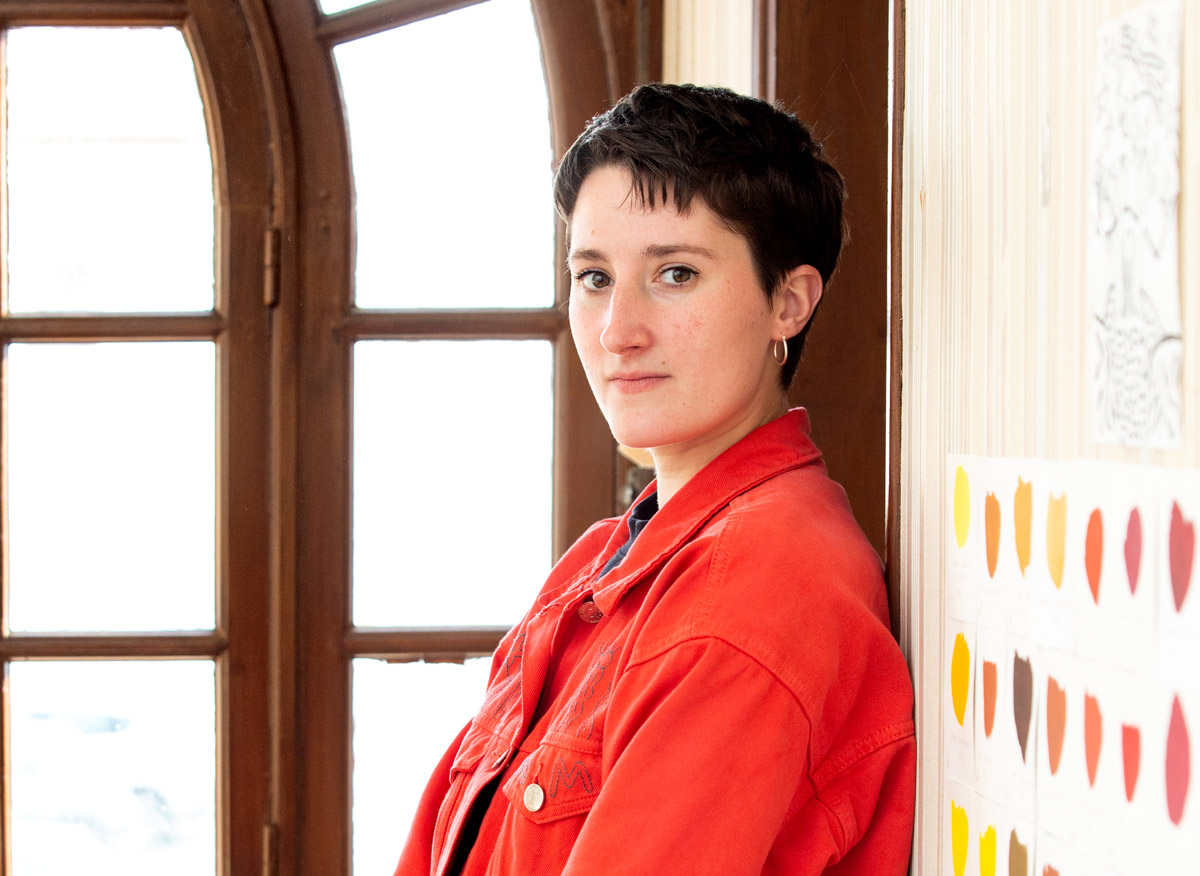
I could say that I am queer, both in gender and in sexuality.
Now he returns to Euskal Herria. From Paris to Glasgow and Glasgow to Alduque.
I realized that doing there what I did there was almost easy. I knew I would come back for a moment and I had to do the same in Euskal Herria. And that would be interesting. I feel like I've taken the weight off the animal. On the other hand, I had a terrible nostalgia. The city is very interesting, but I psychologically am nothing citizen. The city is demanding a lot of strength, because I'm nervous. I find it difficult. Two or three days, or in clay-shaped, outstanding. But throughout the year I find it difficult. I need nature and peace of mind.
"I learned to work pleasure and not pain in Glasgow. As in Paris in Euskal Herria, we think that for our work to be good we have to stand. And I disagree with those speeches.”
I knew that to go to the city I would need more money to pay the rent, and I couldn't work as an illustrator. So, I came home from the family, I saw working in an inn… When you live in a village, people know you, you can buy vegetables and local outbursts, and life becomes pretty cheap. That has given me time. Work three to four days and draw three to four days. In the city I couldn't.
I have resumed my friendship relations. I got into the dynamics of libertism, I learned Euskera again, because I forgot… It was a great fault for losing Euskera! I gave myself a year. And look. I feel satisfied. At the same time, it is difficult to go against it. It must be taken on board. People don't always understand what they're doing in the hostel pseudolaris and drawings, instead of flipping a fixed job. My choice, high, is to be an illustrator, and to live from it.
In your work there's something that makes you think they're yours. Is that the style?
When we were in class, on weekends, I remember that I went back to making letters to decide how my “a” was going to be. And unknowingly, he did typography. I have my style from the ttip. It has changed me a lot over time, but I always have it. Now that I see something from three years ago, I barely see my style. From the outside, it is seen that it is atheist, but in me everything changes every day.
We have to trust. And he works a lot! If you draw everyday, you like some drawings and others not, but the search for your style has it. You have to figure out what you want. On social media, people continue, always recycling something new. Keep your eyes open. When you see an image in the movies and find it beautiful, teach it remembering. The same thing that reads something and suggests an image.
And you also have to learn how to value your work. You don't feel too critical of yourself. Look at one of your drawings and think: “That’s what I did. That day I said what I could give and that was, and that's right. If I can do better, better, better now.” But your drawing isn't you. It's your drawing. It doesn't fully represent you.
One of the characteristics of their work is the frequent presence of women.
Yes. It's a subject that I really care about. We all have a canonical image of his wife. I know that I have always entered those codes. I'm long, I'm thin... and I used to draw women like me. Until I realized that I didn't want these wives. Those who perceived beautiful, those who looked on the street, were in more ways. Then I realized that that was also political. It wasn't a simple taste. And there I've started exajar, representing very muscular, or very obese, furry bodies... I recently realized I was racist. I only draw white women. So now I've started drawing all the colors. And also as far as gender is concerned, I try to propose bodies without gender so that you can see what you want. Penis, breasts, alua and hairs... It's what you want and it's nothing. It's all. If you see hair about a person and think that's why he's a man, that's what you see. I don't, but it's not a problem. My point of view is different. Something different in our visual environment. A seed for people to wonder.
"I've also reinvented my friendship relationships. I got into the dynamics of libertism, I learned Euskera again, because I forgot… It was a great fault for losing Euskera!”
Is the Bekatorosak project the sum of your life experience, thought and ability to draw?
Yes. I think before I develop a project, “What makes me scream?” and they are things that I had lived. And I understand these issues with humor. Drawing attracts the eyes and humor makes it easy to talk about complicated issues without scare people.
From the outset I wanted to make a project to refer here to supra-present homosexuality. An opportunity to interview these people and get to know their lives. Thus, I met seven lesbian, gay and bisexual people from Baja Navarra. The oldest is about 50 years old and the youngest is 24 years old. I have conducted interviews, written, rewritten, divided, selected fragments and illustrated fragments, forming an illustrated album. It has a rather peculiar shape. All the texts are manuscripts, text and image are mixed… I've taken a year to do everything. And I've done it. Of pleasure.
* * * * * * * * * * *
TRANSFER TO DOM
"My first sexist attack I lived at the age of 15 in Alduce's hostel. A 22-year-old man pulled me out of my liver and took my ass with both hands. I came back, and he and his friends started looking forward. There I understood that my body was not atheist. It was everybody's. I felt blackened. I complained about being a woman. Now no, but then yes. And that's what caused me the desire and the need to think about feminism. And that's where I got to ask my gender. What am I? Am I a woman? Am I not a woman? Maybe I'm not always a wife. Do I have to identify with a single gender? Glasgow offered me the opportunity to experiment with it. There I passed Dom. The men who are called Dominic in Scotland are called Dom. And being me Dominique, people started calling me Dom. Then my name is Dom."
EUSKALDUN FEDEDUN AND HETERO “I started
seeing examples of homosexual people thanks to film and art, but they were all in English or French and it was nothing in Basque. And it seemed to me that Basque identity was not compatible with gay identity. And in a way, paradoxically, I thought I needed to be myself, I was away from my vasquity, because I was told that it was not possible for me to be free in the Basque environment”.
Aspaldi pertsona oso zatar bat ezagutu nuen, urrun izatea komeni den pertsona horietako bat. Bere genero bereko pertsonengana zuzentzeko, gizonezkoengana, “bro” hitza erabili ohi zuen. Edozein zapaltzeko prest zegoen, bere helburuak lortzeko. Garai hartatik hitz... [+]
La bajona kolektibo kide Heiko Elbirak salatu du psikiatriak zisheteroarautik aldentzen diren erotikak kontrolatu nahi dituela.
Prentsaurrekoa eskaini dute ostegun honetan Marc Aillet Baionako apezpikuak, elizbarrutiko hezkuntza katolikoko zuzendari Vincent Destaisek eta Betharramgo biktimen entzuteko egiturako partaideetarikoa den Laurent Bacho apaizak. Hitza hartzera zihoazela, momentua moztu die... [+]
Antifaxismoari buruz idatzi nahiko nuke, hori baita aurten mugimendu feministaren gaia. Alabaina, eskratxea egin diote Martxoaren 8ko bezperan euskal kazetari antifaxista eta profeminista bati.
Gizonak bere lehenengo liburua aurkeztu du Madrilen bi kazetari ospetsuk... [+]
11 adin txikikori sexu erasoak egiteagatik 85 urteko kartzela zigorra galdegin du Gipuzkoako fiskaltzak. Astelehenean hasi da epaiketa eta gutxienez martxoaren 21era arte luzatuko da.
MAITE: (biharko eguna antolatzen bere buruaren baitan) Jaiki, gosaldu, bazkaria prestatu, arropa garbitu, etxea garbitu, gizon hori jaiki, seme-alabak jaiki, hiru horien gosaria prestatu, haiek agurtu, erosketak egin, lanera joan, seme-alabak eskolatik jaso, merienda eman,... [+]
Matxismoa normalizatzen ari da, eskuin muturreko alderdien nahiz sare sozialetako pertsonaien eskutik, ideia matxistak zabaltzen eta egonkortzen ari baitira gizarte osoan. Egoera larria da, eta are larriagoa izan daiteke, ideia zein jarrera matxistei eta erreakzionarioei ateak... [+]
Lantzeko inauteri txikien kalejira ikusle guztien begietara urtero modukoa izan zen. Txatxoak, Zaldiko, Ziripot eta Miel Otxin herriko ostatuko ganbaratik jaitsi eta herritik barna bira egin zuten txistularien laguntzarekin. Askok, ordea, ez zekiten une historiko bat bizitzen... [+]
Elizak 23 kasu ditu onarturik Nafarroa Garaian. Haiek "ekonomikoki, psikologikoki eta espiritualki laguntzeko" konpromisoa adierazi du Iruñeko artzapezpikuak.
15 urteko emakume bati egin dio eraso Izarra klubean jarduten zuen pilota entrenatzaile batek.
Lestelle-Betharramgo (Biarno) ikastetxe katolikoko indarkeria eta bortxaketa kasuen salaketek beste ikastetxe katoliko batzuen gainean jarri du fokua. Ipar Euskal Herriari dagokionez, Uztaritzeko San Frantses Xabier kolegioan pairaturiko indarkeria kasuak azaleratu dira... [+]
Uribe Kosta BHI institutuko hainbat ikaslek salatu duenez, mezu "iraingarriak, matxistak eta homofoboak" jaso dituzte Batxilergoko beste ikaskide batzuengandik. Horrez gain, gaineratu dute mezuak irakasle bati ere bidali dizkiotela eta beste ikasle batzuen... [+]
Bi neska komisarian, urduri, hiru urtetik gora luzatu den jazarpen egoera salatzen. Izendatzen. Tipo berbera agertzen zaielako nonahi. Presentzia arraro berbera neskek parte hartzen duten ekitaldi kulturaletako atarietan, bietako baten amaren etxepean, bestea korrika egitera... [+]
Martxoak 8a heltzear da beste urtebetez, eta nahiz eta zenbaitek erabiltzen duten urtean behin beren irudia morez margotzeko soilik, feministek kaleak aldarriz betetzeko baliatzen dute egun seinalatu hau. 2020an, duela bost urte, milaka emakumek elkarrekin oihukatu zuten euren... [+]
Neska adingabeari sexu abusuak era jarraituan egin zizkiola frogatutzat jo du Bizkaiko Lurralde Auzitegiak.











